Don't wanna be here? Send us removal request.
Text
How to Troubleshoot Slow Internet Upload Speed Issues

When faced with sluggish internet upload speeds, it's essential to pinpoint and resolve the underlying issues promptly. Begin troubleshooting by checking for bandwidth-hogging applications or background downloads, which can strain upload capacity. Ensure that your router firmware is up-to-date, and consider resetting it if necessary. Review the network hardware for any potential faults or interference, and try connecting via an Ethernet cable to rule out any Wi-Fi signal problems. Additionally, consult your Internet Service Provider (ISP) to confirm if your plan accommodates the desired upload speeds. Employing these steps will aid in identifying and rectifying the factors contributing to your internet's slow upload performance. https://internetspeed9.wordpress.com/2023/08/26/internet-upload-speed-test/ #onlinespeedtest
0 notes
Text
Unveiling the Hidden Factors Affecting Your Internet Upload Speed
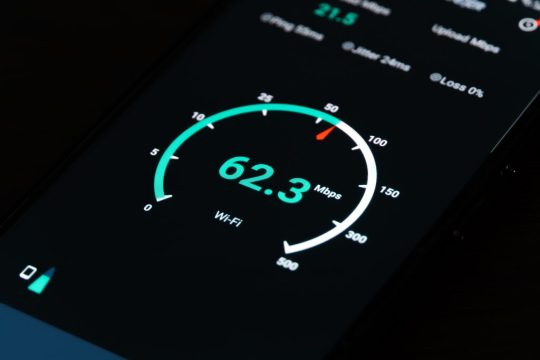
In today's digitally interconnected world, a stable and high-speed internet connection is essential for various online activities. Whether it's uploading large files, video conferencing, or streaming content, a reliable internet connection with commendable upload speed is crucial. However, several factors can influence the upload speed, often leading to unexpected fluctuations or sluggish performance. While many individuals primarily focus on download speed, understanding the hidden aspects that impact upload speed is imperative for a seamless online experience.
The Role of Upload Speed:
Internet upload speed represents the rate at which data can be transmitted from a user's device to the Internet. It significantly impacts activities such as sending emails with attachments, sharing files on cloud platforms, live streaming, video conferencing, and online gaming. For businesses, a stable and robust upload speed is vital for efficient data transfer, seamless collaboration, and uninterrupted communication. Hence, comprehending the underlying factors affecting upload speed is essential for optimizing internet performance.
Factors Affecting Internet Upload Speed:
Internet Service Provider (ISP) and Connection Type:
The quality of the internet service provider and the type of connection you have subscribed to play a crucial role in determining upload speed. Fiber-optic connections generally offer higher upload speeds compared to Digital Subscriber Line (DSL) or cable connections. Additionally, the type of plan you have chosen from your ISP can directly impact the upload speed you experience.
Network Congestion:
Network congestion occurs when the volume of data being transmitted through the network exceeds its capacity. During peak usage hours, when many users are simultaneously uploading data, network congestion can significantly slow down the upload speed. This issue is particularly noticeable in densely populated areas or regions where internet infrastructure is not sufficiently developed.
Upload and Download Speed Disparity:
In some internet plans, there might be a significant disparity between the download and upload speeds offered. While download speeds are often prioritized by ISP
cater to the demands of media consumption, upload speeds might be significantly lower. It is essential to consider both upload and download speeds when selecting an internet plan, especially for those who frequently engage in data-heavy upload activities.
Hardware Limitations:
The quality and capability of your networking equipment and devices can influence upload speed. Outdated routers, modems, or network interface cards might not support the latest upload speed capabilities, thereby limiting the overall performance. Ensuring that your hardware is up to date and compatible with high-speed internet connections can help in maximizing upload speed.
Software Interference:
Background software applications consuming network resources can impact upload speed. Certain programs, particularly those that run automatic updates or perform large data transfers, can consume a significant portion of the available upload bandwidth, leading to reduced speeds for other online activities. Monitoring and managing the software running on your devices can help alleviate this issue.
Quality of Wiring and Cabling:
The quality of internal and external wiring within your premises can affect the upload speed. Poorly installed or deteriorating cables can result in signal degradation and data loss, ultimately impacting the overall internet performance. Ensuring that the wiring and cabling infrastructure is well-maintained and up to the required standards can help minimize potential upload speed issues.
Distance from the Exchange:
For users of DSL internet connections, the distance from the nearest telephone exchange can significantly impact upload speed. DSL connections are susceptible to signal degradation over longer distances, resulting in slower upload speeds for users farther away from the exchange. Users in rural or remote areas might experience this limitation more prominently.
Network Protocol Overhead:
The overhead associated with various network protocols can consume a portion of the available bandwidth, affecting the effective upload speed. Network protocols such as Transmission Control Protocol/Internet Protocol (TCP/IP) and User Datagram Protocol (UDP) utilize some bandwidth for control and error-checking purposes, potentially leading to a reduction in the overall upload speed.
Geographical Location: Geographical location plays a vital role in internet upload speed, especially in areas with limited internet infrastructure. Remote or rural locations might have limited access to high-speed internet, resulting in lower upload speeds compared to urban or metropolitan areas with better-developed internet connectivity.
Optimizing Your Upload Speed:
Understanding the factors influencing internet upload speed can help users take proactive measures to optimize their internet connection. Here are some strategies to enhance upload speed:
Regularly update hardware and networking equipment to ensure compatibility with high-speed internet connections. Opt for an internet plan that offers balanced upload and download speeds, catering to your specific usage requirements. Minimize the usage of background software applications that consume significant network resources, especially during critical upload activities.Employ quality wiring and cabling infrastructure to minimize signal degradation and data loss within your premises. Consider using wired connections instead of wireless connections, as wired connections often offer more stable and reliable Internet upload speed Test
Conclusion:
In the era of digital connectivity, a stable and high-speed internet connection is indispensable for various online activities. Understanding the hidden factors that influence internet upload speed is crucial for users to optimize their online experiences. By addressing hardware and software limitations, ensuring efficient network management, and staying informed about the latest developments in internet technology, users can take proactive steps to enhance their internet upload speed and enjoy seamless online connectivity.
0 notes
Text
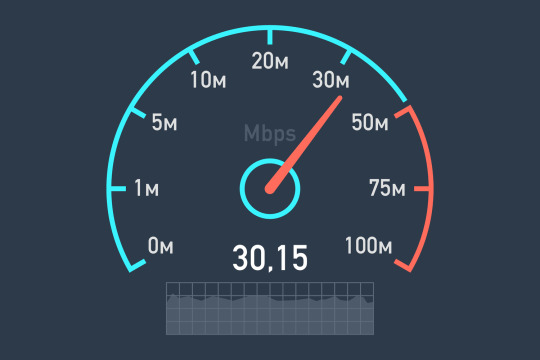
Internet upload speed tests are crucial for assessing the efficiency of data transfer from your device to the internet. They help determine the rate at which you can send data, such as files, photos, or videos, to the web. These tests measure the upload speed in megabits per second (Mbps), indicating how quickly you can share data online. A higher upload speed facilitates smoother video conferencing, faster file sharing, and more seamless cloud backups. Conducting regular speed tests ensures that your internet plan meets your data-sharing requirements, enabling you to make informed decisions about your online activities and potential upgrades.
#internetspeedtest
0 notes
Text
Beyond the Basics: Advanced Techniques to Optimize Your Internet Upload Speed
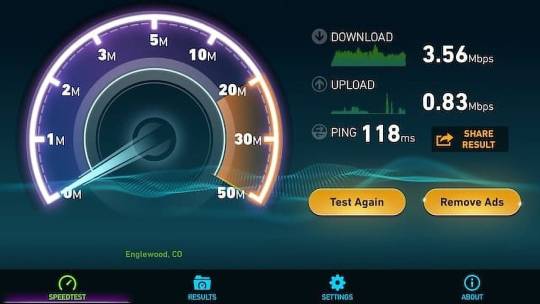
Beyond the fundamentals, several advanced techniques can significantly enhance internet upload speed optimization. First, employing Quality of Service (QoS) settings on routers prioritizes critical data traffic, guaranteeing smoother data transmission. Additionally, leveraging traffic shaping and bandwidth management tools assists in controlling data flow, preventing congestion, and ensuring consistent upload speeds. Implementing a combination of advanced protocols, such as Multipath TCP and User Datagram Protocol (UDP), can also amplify upload speeds by enabling data transmission through multiple paths simultaneously and minimizing data packet loss.
Furthermore, utilizing Ethernet connections instead of Wi-Fi for crucial uploads reduces interference and enhances stability, leading to more reliable and faster data transfers. Optimizing the MTU (Maximum Transmission Unit) size to its ideal value prevents unnecessary data fragmentation and retransmissions, subsequently boosting upload speed efficiency. Employing a robust firewall with proper configuration safeguards against potential cyber threats, preventing network slowdowns caused by malicious activities. https://internetspeed9.wordpress.com/2023/08/26/internet-upload-speed-test/
0 notes
Text
The Importance of Internet Upload Speed: What You Need to Know
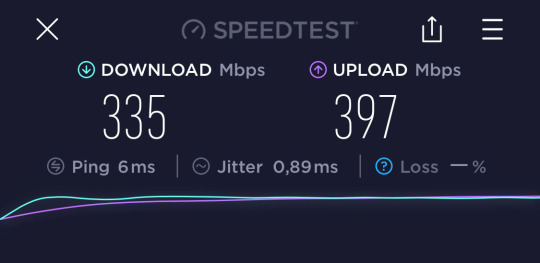
In an increasingly interconnected world where online communication and content sharing have become commonplace, the importance of a fast and reliable internet connection cannot be overstated. While much emphasis is often placed on download speeds, the significance of internet upload speed is frequently overlooked. Understanding the role of upload speed in various online activities is crucial for comprehending its importance and its impact on daily digital operations. This article aims to shed light on the importance of internet upload speed, elucidating its relevance in the context of modern internet usage.
The Significance of Upload Speed:
Seamless Communication: Internet upload speed is paramount for smooth and uninterrupted communication. Whether it's participating in video conferences, making voice calls, or engaging in live streaming, a robust upload speed ensures that your outgoing data is transmitted quickly and efficiently. A high upload speed contributes to clearer audio and video quality, thereby facilitating effective real-time communication.
Efficient File Sharing: Sharing files, documents, and multimedia content often necessitates a substantial upload speed. Whether you're uploading photos, videos, or other media to a cloud platform or sharing large files with colleagues and clients, a fast upload speed significantly reduces the time it takes to transfer data, enhancing overall productivity and collaboration.
Content Creation and Publishing: For content creators, such as video producers, graphic designers, and musicians, a reliable upload speed is essential for timely content delivery. Uploading high-resolution videos, graphics, or music files to various online platforms requires a robust upload speed to ensure that the content reaches the intended audience without significant delays.
Cloud-Based Services: As cloud-based services continue to gain prominence, a strong upload speed becomes crucial for efficiently backing up data, synchronizing files across multiple devices, and accessing cloud-based applications. A faster upload speed facilitates quick data transfer to and from cloud servers, enabling seamless access to critical information and resources from any location.
Online Gaming: Multiplayer online gaming heavily relies on stable and fast upload speeds to ensure minimal latency and smooth gameplay. A high upload speed enables gamers to transmit their actions and commands to the game server swiftly, resulting in a seamless and immersive gaming experience without lags or delays.
Video Streaming and Live Broadcasting: With the surge in video content consumption and live streaming, a robust upload speed is essential for content creators and individuals alike. Whether you're live streaming on social media platforms, hosting webinars, or broadcasting live events, a fast upload speed ensures that your audience receives high-quality, uninterrupted video content without buffering or pixelation issues.
Optimizing Upload Speed for Enhanced Online Experience:
To fully harness the benefits of a fast internet upload speed, individuals and businesses can take proactive steps to optimize their internet connectivity. Implementing measures such as upgrading to higher-speed internet plans, utilizing wired connections, optimizing network settings, and managing background applications can significantly enhance upload speed and overall internet performance.
Conclusion:
Internet upload speed Test plays a pivotal role in enabling efficient communication, seamless file sharing, content creation, and the smooth functioning of various online activities. Recognizing its significance in today's digitally interconnected landscape is imperative for individuals and businesses seeking to maximize their productivity and streamline their online operations. By understanding the importance of internet upload speed and adopting appropriate strategies to optimize it, users can ensure a seamless and efficient online experience, fostering improved communication, collaboration, and content delivery.
0 notes
Text

An Internet upload speed test measures the rate at which data is sent from your device to a server on the internet. It's an essential metric for tasks like sending emails, sharing files, video conferencing, and online gaming. The result is typically expressed in megabits per second (Mbps). https://internetspeed9.wordpress.com/2023/08/26/internet-upload-speed-test/
0 notes
Text
How to Choose the Right Internet Plan for Faster Upload Speed

Choosing the right internet plan is crucial for ensuring faster upload speeds, especially if you rely on your internet connection for work, streaming, online gaming, or other activities that involve uploading data. In this 600-word guide, we'll explore the factors to consider when selecting an internet plan that prioritizes faster upload speeds.
1. Determine Your Upload Needs:
Before selecting an internet plan, it's essential to understand your specific upload requirements. Consider what you'll be doing online. Are you a content creator, a remote worker who attends video conferences, or a gamer who streams gameplay? These activities often demand higher upload speeds.
2. Check the Upload Speeds:
Not all internet plans are created equal when it comes . Many plans focus on promoting their download speeds, but upload speeds can vary significantly. Look for plans that offer symmetrical speeds, where the upload speed is similar to the download speed. This is crucial for tasks that involve uploading large files, video conferencing, or online content creation.
3. Avoid Basic or Budget Plans:
Basic or budget internet plans often have slower upload speeds. They may be fine for basic web browsing and email, but they may not be suitable for more demanding tasks. Consider investing in a mid-tier or premium plan that offers better upload performance.
4. Research Local Internet Providers:
The availability and quality of internet providers can vary by location. Research the internet service providers (ISPs) available in your area and compare their plans. Look for customer reviews and ask neighbors or colleagues about their experiences with different providers.
5. Look for Fiber-Optic or Cable Internet:
Fiber-optic and cable internet connections are known for providing better upload speeds compared to DSL (Digital Subscriber Line) or satellite connections. If available in your area, consider opting for a fiber-optic or cable plan. These technologies often offer symmetrical speeds and reliable connections.
6. Understand Bandwidth:
Bandwidth refers to the amount of data that can be transmitted over your internet connection at a given time. Plans with higher bandwidth can handle more simultaneous activities, which is crucial for maintaining fast upload speeds, especially in households with multiple users.
7. Assess Data Caps and Throttling:
Some internet plans come with data caps, whic limit the amount of data you can upload and download each month. Additionally, certain ISPs may throttle your speeds after reaching a certain data threshold. Make sure you understand the terms and conditions of your plan to avoid any unpleasant surprises.
8. Inquire About Symmetrical Plans:
Symmetrical internet plans offer upload speeds that are just as fast as the download speeds. While they may be slightly more expensive, they are ideal for users who prioritize high-quality video conferencing, online gaming, and content creation.
9. Test Different Plans:
Some ISPs offer trial periods or allow you to switch plans without penalties. Consider testing a plan to see if it meets your upload speed requirements. If it doesn't, you can switch to a different plan more suited to your needs.
10. Compare Costs:
While upload speed is important, it's also crucial to consider your budget. Compare the costs of different plans and ensure that the one you choose offers a balance between price and performance. Sometimes, the most expensive plan isn't the best value for your needs.
11. Bundle Services:
Many ISPs offer bundle packages that include internet, television, and phone services. These bundles can sometimes provide cost savings and faster upload speeds compared to purchasing each service separately.
12. Read the Fine Print:
When signing up for an internet plan, carefully read the contract and any fine print. Ensure that the plan you select meets your upload speed requirements and doesn't have hidden fees or limitations that may affect your experience.
13. Check for Promotions:
ISPs often run promotions and special offers, especially for new customers. Look for deals that provide faster upload speeds at a discounted rate for the first few months or a year. Just be sure to understand the regular pricing once the promotional period ends.
14. Inquire About Upgrades:
Once you've chosen an internet plan, periodically inquire with your ISP about any available upgrades. ISPs may introduce new plans with faster speeds, and you may be able to switch to a better plan without significantly increasing your costs.
15. Consider the Reliability of the ISP:
Reliability is as important as speed. Research the ISP's track record for uptime, customer service, and technical support. A reliable ISP ensures that your fast upload speeds will be consistently available.
16. Seek Recommendations:
Ask friends, family, or colleagues for recommendations on ISPs and plans. Real-world experiences can provide valuable insights into the quality of service, including upload speeds.
conclusion,
choosing the right internet plan Internet Upload Speed Test. requires careful consideration of your specific needs, available options in your area, and the technology used by internet service providers. It's essential to strike a balance between upload speed, cost, and reliability to ensure that you get the best value for your internet service. By following these steps, you can select an internet plan that meets your upload speed requirements and enhances your online experience.
0 notes
Text
How Does Your Internet Upload Speed Compare? Find out with these Tests
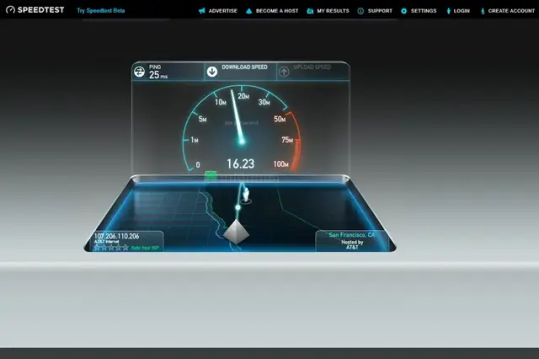
Slow upload speeds can be frustrating, especially when you're trying to send files, video conference, or engage in other online activities. Several factors can contribute to slow upload speeds, and many of them are within your control. In this 1000-word content, we'll explore common reasons for slow upload speeds and provide solutions to help you fix the issue.
Common Reasons for Slow Upload Speeds:
Internet Plan Limitations: Your internet plan might have a lower upload speed compared to download speed. Some plans are asymmetrical, meaning they prioritize downloads over uploads. Consider upgrading to a plan with higher upload speeds if you require faster uploads.
Network Congestion: During peak hours, many people are online, which can congest the network and slow down your upload speed. This is more common with shared or cable internet connections.
Network Type: The type of internet connection you have affects upload speeds. Fiber-optic and symmetrical connections like dedicated leased lines offer faster upload speeds compared to DSL or cable connections.
Equipment Issues:
Router Problems: An outdated or malfunctioning router can limit your upload speed. Make sure your router is in good condition and supports your internet planWired vs. Wireless: A wired connection is generally faster and more stable than Wi-Fi. If possible, connect your device directly to the router using an Ethernet cable.
Modem Compatibility: Ensure your modem is compatible with your internet plan. Outdated modems may not support faster upload speeds.
Interference: Wi-Fi signals can be affected by interference from other electronic devices, neighboring networks, or physical obstacles like walls. Position your router in a central location and reduce interference sources.
Background Applications: Applications running in the background can consume your upload bandwidth. Close or limit the use of apps that are uploading or downloading data while performing important tasks.
Malware or Viruses: Malicious software on your device can cause unwanted network activity, leading to slower upload speeds. Regularly scan your device for malware and viruses.
Cloud Backup or Sync: Automatic cloud backup or synchronization services can consume significant upload bandwidth. Adjust settings to schedule backups during off-peak hours or limit their impact on your network.
your upload speed, especially for specific types of traffic, like peer-to-peer file sharing. Consider changing your ISP or plan if you suspect throttling.
Ways to Improve Upload Speeds:
Upgrade Your Internet Plan: If your current plan has low upload speeds, consider upgrading to a plan with higher upload bandwidth. Contact your ISP for available options.
Test Your Connection: Use online speed test tools to measure your actual upload speed. This helps you understand if your ISP is delivering the speeds you're paying for.
Limit Network Activity: Prioritize essential tasks that require a good upload speed. Avoid heavy uploading or downloading activities during important video calls or file transfers.
Optimize Your Network Equipment:
Upgrade Your Router: Invest in a modern, high-quality router that supports your internet plan and offers good Wi-Fi coverageUse Ethernet: Whenever possible, connect your device directly to the router using an Ethernet cable for a faster and more stable connection.
Update Firmware: Ensure your router's firmware is up to date to benefit from performance improvements and security updates.
Upgrade Your Modem: If your modem is outdated, consider replacing it with a newer model compatible with your plan.
Reduce Interference:
Change Wi-Fi Channel: Adjust your router's channel settings to reduce interference from neighboring networks.
Position Router Properly: Place your router in a central location, away from physical obstructions and interference sources.
Manage Background Applications:
Task Manager: Use your computer's task manager to identify and close applications consuming bandwidth.
Schedule Updates: Configure your devices to update and perform background tasks during off-peak hours.
Check for Malware and Viruses: Regularly run antivirus and anti-malware scans on your devices to ensure they are free from malicious software.
Optimize Cloud Services:
Limit Sync Frequency: Adjust the frequency of cloud backup and synchronization to reduce their impact on your network.
Schedule Backups: Schedule backups to occur during times when you don't need a high upload speed.
Contact Your ISP:
Inquire About Throttling: If you suspect ISP throttling, contact your provider for clarification and possible solutions.
Technical Support: If none of the above steps resolve your issue, contact your ISP's technical support for further assistance.
Consider a Different ISP: If your current ISP consistently provides slow upload speeds and doesn't address your concerns, research alternative internet service providers in your area.
In conclusion
Internet Upload Speed Test can be caused by various factors, but many of them can be resolved or mitigated with the right actions. By understanding the root causes of slow uploads and implementing the recommended solutions, you can enjoy a smoother online experience and ensure that your internet connection meets your needs.
0 notes
Text
Boosting Internet Upload Speed: Proven Tips for Faster Transfers

Boosting Internet Upload Speed: Proven Tips for Faster Transfers
In today's fast-paced, digitally connected world, having a swift and dependable internet connection is paramount. While we often hear about the importance of download speeds, upload speeds are equally critical, especially for those who work remotely, share large files, engage in video conferencing, or partake in other data-intensive online activities. Slow upload speeds can be a major frustration, but fear not, there are practical measures to enhance your internet's upload performance. This blog post explores tried-and-tested tips to boost your upload speeds and ensure smoother data transfers.
1. Evaluate Your Internet Plan
The first step in addressing slow upload speeds is to check your current internet plan. Reach out to your internet service provider (ISP) and inquire about available plans with faster upload speeds. It might be necessary to upgrade your plan to access improved upload speeds. ISPs typically offer a range of packages to cater to different user requirements.
2. Regular Speed Testing
It's imperative to monitor your internet speed consistently. Use online speed test tools Internet Upload Speed Test or Google's Fiber speed test to measure both your download and upload speeds. Regular speed tests enable you to track changes and evaluate the effectiveness of any adjustments
3. Optimize Your Network Hardware
The quality and configuration of your network hardware can significantly influence upload speed. Consider these hardware-related tips:
Opt for Wired Connections: Whenever possible, connect your device directly to the router using an Ethernet cable. Wired connections are generally more stable and offer faster speeds compared to Wi-Fi.
Upgrade Modem and Router: Older modem and router models may not support the latest technology and faster speeds. Investing in newer equipment can lead to better upload performance.
Strategic Router Placement: Position your router centrally to ensure even Wi-Fi coverage throughout your home or workspace. Walls and obstacles can weaken Wi-Fi signals, so it's crucial to minimize interference.
4. Alleviate Network Congestion
Network congestion, especially during peak hours, can adversely affect upload speeds. To address this concern:
Schedule Data Transfers: Consider scheduling data-intensive uploads during off-peak hours when fewer users are on the network.
Limit Background Activities: Pause or limit background downloads and streaming activities while performing crucial uploads.
5. Software and App Optimization
Certain software and applications can consume a significant amount of bandwidth and negatively impact upload speeds. To optimize your software and apps:
Keep Your Operating System Updated: Ensure your computer or device's operating system is up to date, as newer versions often include performance enhancements.
Check for Resource-Hungry Apps: Some applications may run background processes that consume bandwidth. Tools like Task Manager (Windows) or Activity Monitor (macOS) can help identify and close such apps.
Enable Quality of Service (QoS): If your router supports QoS settings, prioritize specific devices or applications to ensure improved upload speed performance.
6. Monitor and Limit Upload-Heavy Services
Certain services, such as cloud backups and peer-to-peer file sharing, can be substantial consumers of upload bandwidth. To manage these services effectively:
Cap Upload Bandwidth: Check if your cloud backup service or file-sharing program allows you to set a limit on the upload bandwidth. Configure this limit so that it doesn't overwhelm your internet connection.
Scheduled Backups: Schedule cloud backups during off-peak hours to minimize interference with your regular internet activities.
7. Consider Alternative Internet Connections
If you continue to struggle with slow upload speeds, it may be worth exploring alternative internet connection types:
Fiber Optic: If available in your area, fiber-optic connections offer both high upload and download speeds.
Cable or DSL: Cable and DSL connections provide better upload speeds compared to older technologies like dial-up, but they might not be as fast as fiber.
Mobile Hotspots: In some instances, mobile hotspots or cellular data connections can provide faster upload speeds. However, they often come with data limitations.
8. Optimize Your Web Browser
The web browser you use can impact the speed of uploading files or data to websites. Consider these browser optimizations:
Clear Browser Cache: Regularly clear your browser's cache, cookies, and history to maintain smooth browser performance.
Keep Your Browser Updated: Ensure you're using the latest version of your browser, as updates frequently include performance improvements.
Try Different Browsers: Some web browsers are better optimized for specific tasks. Explore using a browser that's renowned for better upload performance.
9. Invest in a Network Extender
If you rely heavily on Wi-Fi and experience slow upload speeds in specific areas of your home or workspace, consider investing in a network extender or Wi-Fi repeater. These devices can expand your Wi-Fi coverage, ensuring a stronger.
10. Consult Your ISP
If you've applied the above-mentioned tips and still experience slow upload speeds, it's advisable to contact your ISP. They can perform a line test and troubleshoot potential issues on their end. There might be problems with your connection that require professional assistance or repairs.
In conclusion,
faster upload speed is essential for a range of online activities, and there are various strategies to enhance your upload performance. Whether you need to upgrade your internet plan, optimize your network hardware, minimize network congestion, or adjust your software settings, these proven tips can help you achieve faster and more reliable upload speeds. By implementing these steps, you can ensure that your internet connection meets the demands of all your data-sharing and online communication needs.
0 notes
Text
The Ultimate Guide to Google Fiber Speed Testing

Google Fiber offers lightning-fast internet speeds, but it's essential to ensure you're getting the most out of your subscription. Here's the ultimate guide to Google Fiber speed testing
Use Google's Official Speed Test: Google provides its own speed test tool, available at speedtest.googlefiber.net. This tool is optimized for Google Fiber connections and provides accurate results.
Test Wired and Wireless Connections: Connect your device directly to the Google Fiber modem via an Ethernet cable for the most accurate speed test results. Then, perform a separate test over your Wi-Fi network to see the difference.
Run Multiple Tests: Conduct speed tests at various times of the day to account for potential network congestion. Running tests at different times can help you determine if there are specific peak usage hours.
Check Ping and Latency: Besides download and upload speeds, pay attention to ping and latency. Low ping and latency ensure a smooth online experience, especially for gaming and video conferencing.
Consider Device Performance: Older devices may not be able to take full advantage of Google Fiber's speeds. Ensure your devices are capable of handling high-speed connections.
Update Your Router: A high-quality router can significantly improve your Wi-Fi speeds. Consider upgrading to a router that supports the latest Wi-Fi standards.
Contact Customer Support: If you consistently experience slower speeds than what you're paying for, contact Google Fiber's customer support for assistance and troubleshooting.
Regular speed testing ensures you're getting the best performance from your Google Fiber Speed Test subscription, enhancing your online experience for streaming, gaming, and more.
2 notes
·
View notes